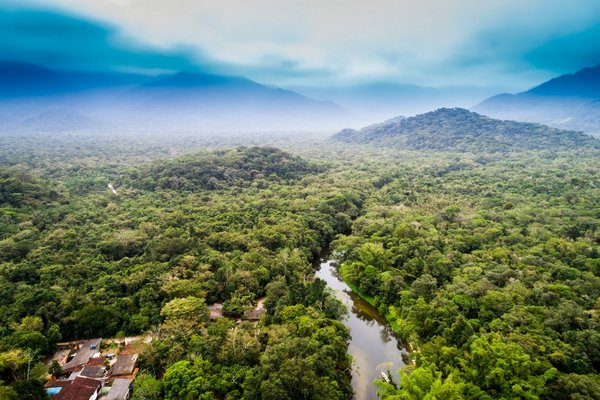 Read this article in French
Read this article in French- Share this article
- Subscribe to our newsletter
Degradation of the Amazon rainforest
The Amazon rainforest has been degraded by a much greater extent than scientists previously believed, with more than a third of remaining forest affected by humans. This is the finding of a study published in January 2023 by researchers from Brazil’s University of Campinas (Unicamp), the Amazon Environmental Research Institute (IPAM), the Brazilian National Institute for Space Research (INPE), and Lancaster University in the UK.
The study shows that up to 38 per cent of the remaining Amazon forest area – equivalent to ten times the size of the UK – has been affected by some form of human disturbance, causing carbon emissions equivalent to or greater than those from deforestation.
The researchers define the concept of degradation as transient or long-term changes in forest conditions caused by humans. Degradation is different from deforestation, where the forest is removed altogether and a new land use, such as agriculture, is established in its place. Although highly degraded forests can still lose almost all their trees, the way the land itself is used does not change.
The authors evaluate four key disturbances driving forest degradation: forest fire, edge effects (changes that occur in areas of the forest adjacent to deforested areas), selective logging (including illegal logging) and extreme drought. Different forest areas can be affected by one or more of these disturbances.
“Despite uncertainty about the total effect of these disturbances, it is clear that their cumulative effect can be as important as deforestation for carbon emissions and biodiversity loss,” said Jos Barlow, a professor of conservation science at Lancaster University in the UK, and co-author of the paper.
In a projection made by the team for 2050, the four degradation factors will continue to be major sources of carbon emissions into the atmosphere, regardless of whether deforestation increases or decreases.
The authors propose creating a monitoring system for forest degradation, as well as preventing and curbing illegal logging and controlling the use of fire. One suggestion is the concept of “smart forests” which, like “smart cities”, would use different types of technologies and sensors to collect useful data in order to improve the quality of the environment.
(Lancaster University/ile)





Add a comment
Be the First to Comment